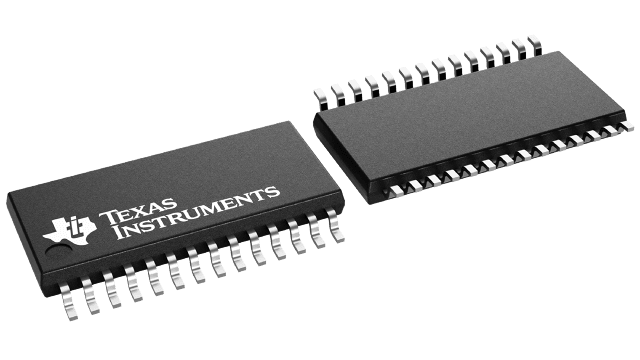| Type | Mux Buffer |
| Number of channels (#) | 4 |
| Input compatibility | AC-coupling, PECL |
| Speed (Max) (Gbps) | 1.485 |
| Protocols | Fibrechannel |
| Operating temperature range (C) | -40 to 85 |
- Replicates Serial Links Such as Fibre Channel,
Gigabit Ethernet, and HDTV Links - T11 Fibre Channel Compliant at 1.0634 Gb/s
- IEEE802.3-2005 Gigabit Ethernet Compliant
at 1.25?Gb/s (1000Base-X) - Support for SMPTE-292M Data Rate at 1.485?Gb/s
- Compatible With VSC7132-01
- No External Components Required
- 0.455 W Maximum Power Dissipation
- 3.3 V Power Supply
- 28-Pin, 4,4 mm × 9,7 mm TSSOP Package
- Footprint Compatible with VSC7132
The SN65LVCP15 is a high performance serial link mux for use in Fibre Channel (1.0625 Gb/s), Gigabit Ethernet (1.25 Gb/s), and other high speed interface applications. A common application involves a serializer/deserializer (SerDes), such as the TLK2201B, which would normally be connected to the IN± and OUT± ports in order to provide duplicate set of links on the IN0/OUT0 and IN1/OUT1 ports. This type of application is often used to implement high speed test ports that can be monitored without affecting the serial data stream of the application. A popular application is in Line Cards, that use serial links from a SerDes like TLK2201B (SLLS585), where the SN65LVCP15 provides redundant, hot-swappable links to redundant Switch Fabric Cards.
During normal operation, IN is sent to both OUT0 and OUT1 whose buffers are enabled when OE0 and OE1 are HIGH. OUT0 can select between IN and IN1. OUT1 can select between IN and IN0. OUT can select between IN0 and IN1.
In Link Replicator applications, such as the Line Card to Switch Card links, IN is transmitted to both OUT0 and OUT1 which either IN0 or IN1 is selected at OUT. In host Adapter applications, IN goes to OUT0 (an internal connector) which returns data and IN0. IN0 is looped to OUT1 (an external connector) which returns data on IN1 and then back to the SerDes on OUT.








